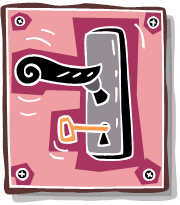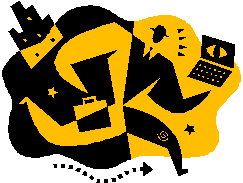Why Investing in Your People is the Best Business Strategy You’ll Ever Make
By Patty Crabtree, CEO Lighthouse Consulting Partners LLC
After 50 years in business, a seasoned executive shared a simple truth: “The most valuable asset in any company isn’t a product or process—it’s your people. When your team is firing on all cylinders, the entire organization thrives.”
This insight is more than just a reflection—it’s a proven business strategy.
While companies often chase innovation, efficiency, and scalability, long-term success comes from within. Organizations that invest in their people—through skill development, coaching, and improved team dynamics—gain a competitive advantage that’s hard to replicate.
The ROI of Investing in Human Capital
The numbers speak for themselves:
- A study by LinkedIn Learningfound that 94% of employees said they would stay longer at a company that invested in their learning and development.
- According to Gallup, companies with highly engaged workforces outperform their peers by 21% in profitabilityand 17% in productivity.
- Research from Boston Consulting Groupfound that companies with above-average talent management practices saw 2 times the revenue growth and 1.5 times the profit margins compared to those with below-average practices.
Staff development isn’t just a nice-to-have. It’s a multiplier. When employees feel seen, valued, and equipped to succeed, they show up with more energy, creativity, and ownership.
Team Dynamics: The Hidden Lever of High Performance
Often overlooked, team dynamics are the engine behind organizational success. When teams function well—communicating clearly, understanding one another’s strengths, and collaborating effectively—they move faster and solve problems more creatively.
People often think of growth as an individual pursuit but the real transformation happens when you invest in how people work together. That’s where performance leaps forward.
The Harvard Business Review reports that psychologically safe teams—where individuals feel they can take risks and express themselves without fear—are more innovative and faster at solving complex problems. And according to Deloitte, companies that prioritize inclusive team cultures are 8 times more likely to achieve better business outcomes.
The Cost of Doing Nothing
On the flip side, failing to invest in people is costly:
- S. businesses lose up to $1 trillion annuallydue to voluntary turnover, much of it driven by lack of growth opportunities (Gallup).
- Disengaged employees cost organizations 18% of their annual salaryin lost productivity.
- Poor collaboration and communication in teams account for 86% of workplace failures, according to Salesforce research.
When organizations neglect professional growth or allow team dysfunction to go unaddressed, the result is high turnover, low morale, and underperformance—all of which erode business value over time.
Building for the Long Game
The organizations that rise above these challenges are those that commit to long-term investment in their people. They don’t just train—they coach, mentor, and create structures for team learning. They go beyond job descriptions to understand how individuals think, problem-solve, and contribute to group dynamics.
Understanding work style differences, communication preferences, and stress patterns isn’t just a team-building exercise—it’s strategic alignment. When people understand each other, trust builds. With trust, you get speed, resilience, and results.
Final Thought: It’s Not Just Strategy—It’s Culture
The strongest companies don’t view people development as a one-off workshop or a checkbox on the HR agenda. They embed it into their culture.
They ask:
- Are we helping our people grow?
- Do our teams work in alignment or in silos?
- Are we building a culture of trust, accountability, and continuous improvement?
When the answer is yes, the dividends are real—and measurable.
The return on investing in people is exponential. When you build a culture where individuals grow and teams thrive, you don’t just weather change—you lead through it.
Lighthouse Consulting Partners, LLC
Testing Division provides a variety of talent management services, including in-depth work style personality assessments for new hires, staff development and team building. Lighthouse provides these assessments in 19 different languages along with offering skills testing, leadership and management coaching and offer a variety of workshops including team building and interview skills.
Business Consulting for Higher Productivity Division provides professional coaching, stress management workshops, sales and customer service training, negotiation skills, leadership training, staff planning, operations, and much more.
For more information on our services, please go to www.lighthouseconsulting.com or contact us at Info@LighthouseConsulting.com.
Permission is needed from Lighthouse Consulting Partners, LLC to reproduce any portion provided in this article © 2025














 Culture reflects what is greatest, genuine, and noble about the company. It is the key behaviors an organization expects as the team works together and with its clients and vendors.
Culture reflects what is greatest, genuine, and noble about the company. It is the key behaviors an organization expects as the team works together and with its clients and vendors. Then, they took it one step further. Each value was clearly defined to communicate what it meant to the organization. Definition statements were created for each value to describe its intent. These enhanced values were shared with staff and communicated on a regular basis. Leadership reinforced them in their daily interactions.
Then, they took it one step further. Each value was clearly defined to communicate what it meant to the organization. Definition statements were created for each value to describe its intent. These enhanced values were shared with staff and communicated on a regular basis. Leadership reinforced them in their daily interactions. If your company is being outperformed in the marketplace, you experience high turnover in key positions, financial performance is declining, or just want to move from good to great, often these issues are a result of an unhealthy culture.
If your company is being outperformed in the marketplace, you experience high turnover in key positions, financial performance is declining, or just want to move from good to great, often these issues are a result of an unhealthy culture.








 Mis-Hiring Mistake #1. Not taking the time to define success. Not defining success up front is almost a guarantee of a mis-hire. Defining success is the number one issue behind problems with hiring, performance management, and engagement. Defining success up front dictates where you go to find the candidate, it provides 80 percent of your interview questions, and it lays out performance expectations that you can use in interviewing.
Mis-Hiring Mistake #1. Not taking the time to define success. Not defining success up front is almost a guarantee of a mis-hire. Defining success is the number one issue behind problems with hiring, performance management, and engagement. Defining success up front dictates where you go to find the candidate, it provides 80 percent of your interview questions, and it lays out performance expectations that you can use in interviewing. recruitment effort. To this I’ll add a note about using an executive search firm. Companies frequently make two mistakes in this area. According to Barry Deutsch, Founder of
recruitment effort. To this I’ll add a note about using an executive search firm. Companies frequently make two mistakes in this area. According to Barry Deutsch, Founder of  aren’t investing enough time in preparing for the interview,” he said. He advises his clients to first set the right expectations for the job and make everyone involved in the interview aware of the job’s expectations. “This goes hand in hand with a detailed job description. What is the position expected to know and to accomplish, and by when?”
aren’t investing enough time in preparing for the interview,” he said. He advises his clients to first set the right expectations for the job and make everyone involved in the interview aware of the job’s expectations. “This goes hand in hand with a detailed job description. What is the position expected to know and to accomplish, and by when?”
 can do the job as expected. Fortunately, online skills tests exist for hundreds of common jobs from Accounting to Manufacturing to Software Programming.
can do the job as expected. Fortunately, online skills tests exist for hundreds of common jobs from Accounting to Manufacturing to Software Programming.
 competitive organization through better hiring. Reach out to me any time to get started.
competitive organization through better hiring. Reach out to me any time to get started.